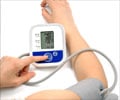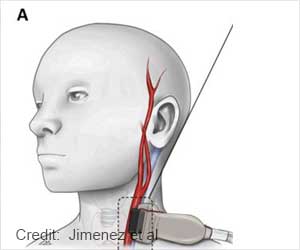Two proteins PIEZO1 and PIEZO2 are necessary for maintaining blood pressure through the reflex, found scientists.

‘Proteins PIEZO1 and 2 in baroreceptors may work as possible therapeutic targets to help people with drug-resistant hypertension.’





"Tight regulation of blood pressure is essential for health," says Wei-Zheng Zeng, PhD, a postdoctoral associate at Scripps Research and first author of the study. "Blood pressure is acutely sensed by baroreceptor neurons, but the mechanism of how baroreceptors sense blood pressure remained a mystery for more than 100 years." The two proteins--PIEZO1 and PIEZO2--were originally discovered in the lab of study senior author Ardem Patapoutian, PhD, a Scripps Research professor and Howard Hughes Medical Institute investigator. In just the past few years, it's become clear PIEZOs do a lot of work. The Patapoutian lab has shown PIEZOs are responsible for sensing pressure in the lungs, different kinds of pain and soft touch. PIEZO1 even helps red blood cells keep their shape.
The scientists focused on PIEZOs as possible players in the baroreceptor reflex because the genes for PIEZO1 and 2 are expressed in sensory neurons responsible for the reflex. Indeed, in the recent experiments with a mouse model, the scientists found that both PIEZOs are necessary for maintaining blood pressure through the reflex.
"Our motivation for this study was rooted in basic science, yet these findings could have major translational implications by improving our understanding of human health," says Patapoutian. "Knowing the identity of the sensors for blood pressure control gives us an idea of how to develop better therapies to treat patients who suffer from drug-resistant hypertension, or any other problems with blood pressure control," says Kara Marshall, PhD, postdoctoral associate at Scripps Research and co-author of the study.
The scientists recommend further studies of how PIEZO1 and PIEZO2 work together and how they may function in different populations of neurons. "We are also interested in understanding how human genetic changes in the function of these proteins might affect blood pressure regulation," says Marshall.
Advertisement















